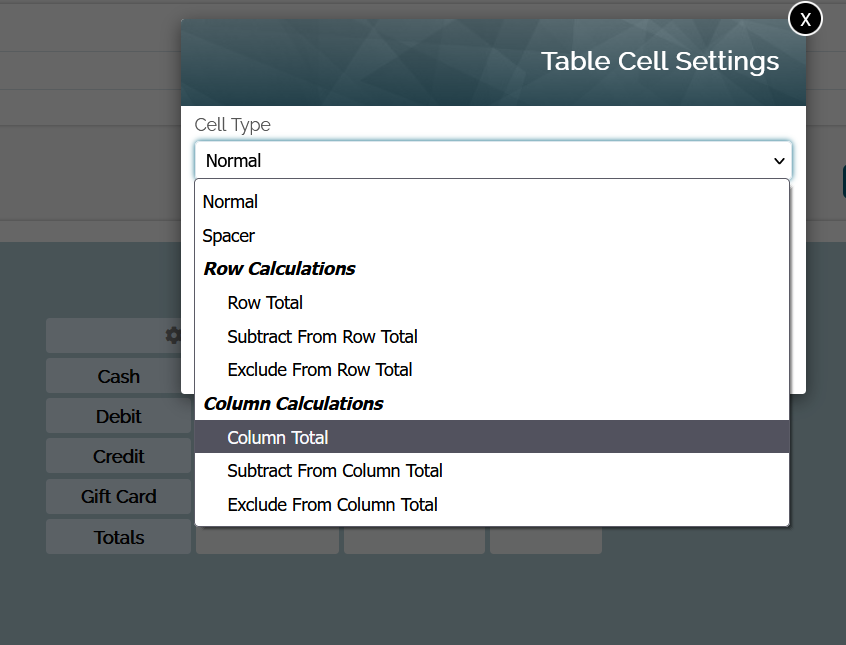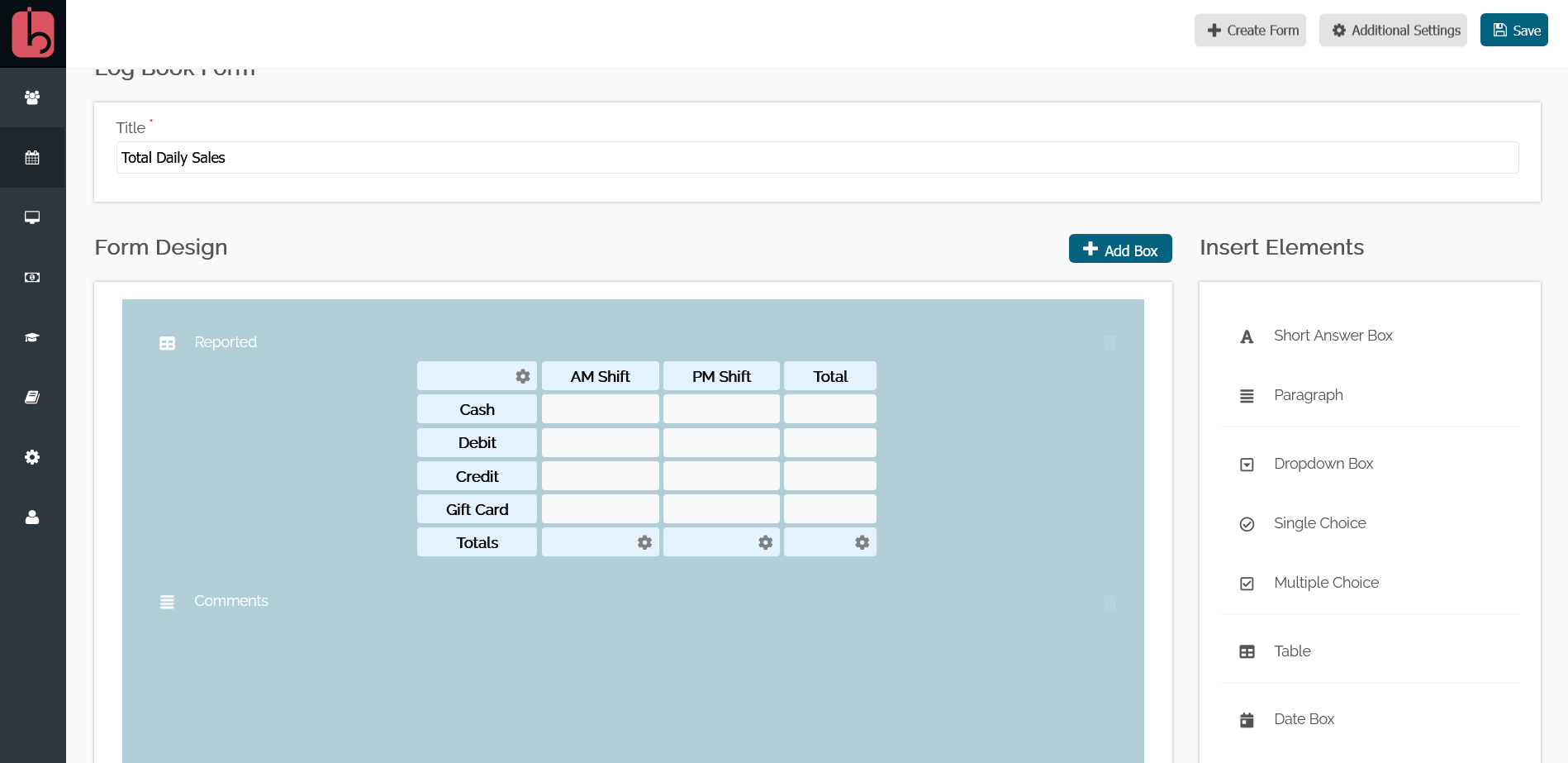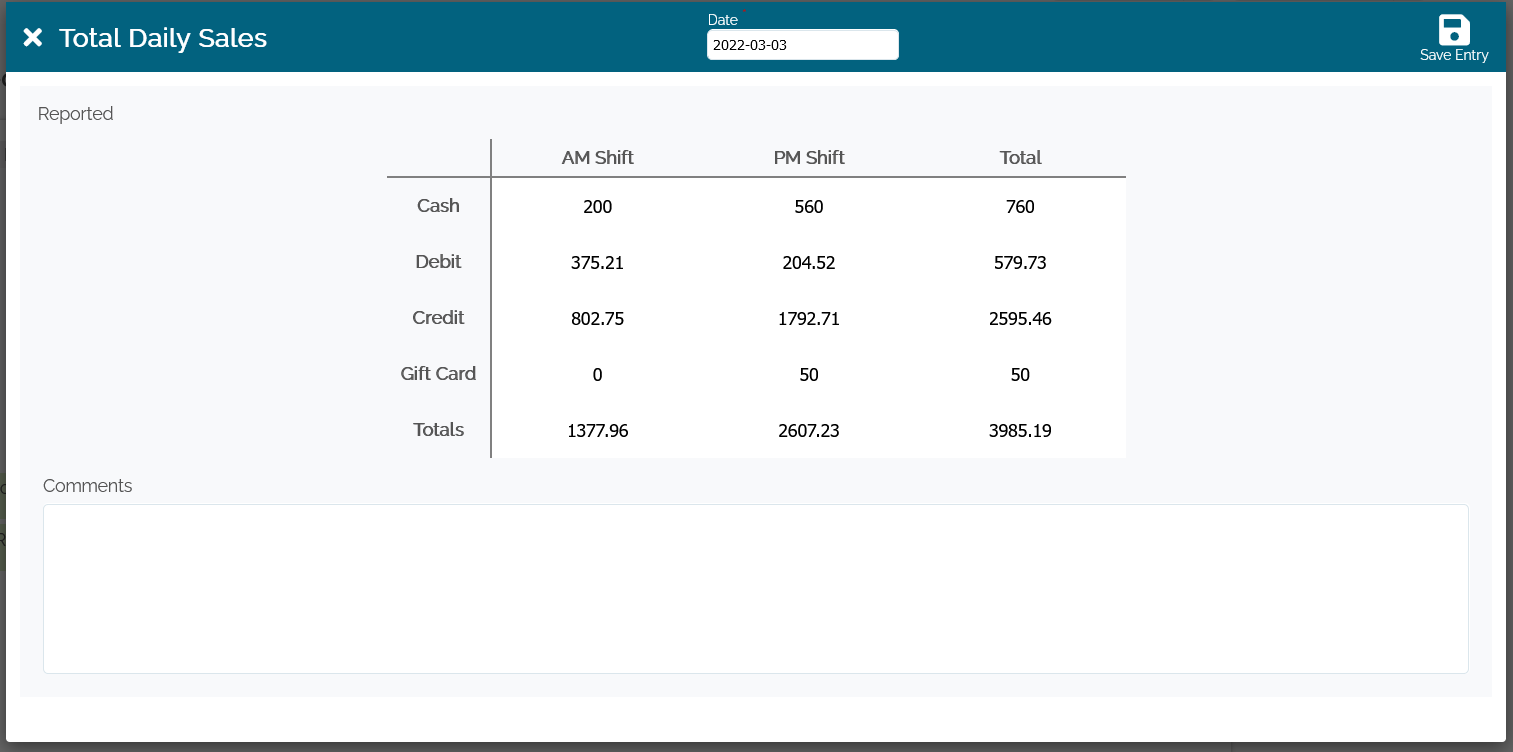Super Charged Log Book Tables
Quickly tally up you daily sales and other counts in your logbook table.
Support
Accounts Payable
- AP Overview
- Purchase Orders
- How to Create Purchase Orders
Brewery Inventory Management
- Activating the Brewery Inventory Module
- Creating Products and Recipes
- Importing BeerXML Recipes
- Quick Start Guide
- Inventory
- Adding Items to Your Inventory
- Batches
- Brewing A Batch
- Creating a Quick Batch
- Packaging
- Defining Packaging Groups
- Packaging Up A Batch
- Setting Up a Packaging Group (Can Flat)
- Setting Up A Packaging Group (Kegs)
- Advanced Options
- SKU Multiplier
Digital Menus
Employee Management
Integrations
Log Book
Scheduling
Settings
Team Messaging
Training
Create a Table
Insert a Table Element in your Manager Logbook Form, and design the table headers (such as AM Totals, PM Totals, etc). Just like using Excel, you can have have your headers run along the top or sides of the table. Then hover your mouse over a cell you would like BarSight to automatically calculate the total for, and click the gear icon.

A window like this will pop up, with a dropdown box showing the different types of functions this cell can perform.
Logbook Table Cell Functions
Your cell is able to perform a number of functions as outlined below:
- Normal - Remove all functions for this cell
- Spacer - A blank and read-only cell
- Row Functions
- Row Total - Will output the total from the row
- Subtract From Row Total - The value in this cell will be subtracted from the row total
- Exclude From Row Total - The value in this cell will not be counted in the row total
- Column Functions
- Column Total - Will output the total from the column
- Subtract From Column Total - The value in this cell will be subtracted from the column total
- Exclude From Column Total - The value in this cell will not be counted in the column total

See The Daily Sales Totals Add Up
With your table cells properly configured, they will automatically add up (or subtract) each other and display the output as your employees type in the data.







